Casey spent a good chunk of this last weekend (Friday through Sunday), building a new field implement for the farm. He got the idea from some farmers in our area — we don’t know them personally, but he saw one of these in use in their fields and thought it was one of the best ideas he’d ever seen.
Now that we don’t have employees, we’re certainly aware of finding new ways to make the best possible use of our limited time in the field — what can we do to be more efficient harvesters, planters, weeders? How can we do this work with as few interruptions as possible in our progress? How can we take the best possible care of all the bodies involved in that field work? Brilliant innovations are welcome on any farm, but especially a small family-operated farm like our own.
So, Casey began with an existing trailer that we used to use as part of our former milking operation. It has also been used for other various farm-y purposes, but in recent months it has mostly been sitting and waiting for a new role out here. Ten years into our farm, we definitely appreciate the high value of farm equipment that can evolve with our operation — that is flexible enough to serve multiple purposes over many years. Trailers certainly fall into that category — they can serve as the home for a mobile milking set-up, the chassis for rolling chicken houses, and more.
After cleaning off the trailer, he began the building of our new tool. The kids were interested in watching the progress of this step, which mostly involved cutting and hammering wood. From what I can remember, Friday afternoon was stupendously gorgeous outside, and the kids ran back and forth between the house (where I was cleaning the kitchen) and the pole barn (where Casey was hard at work building) and our yard (where they climbed on their climbing dome and played with animal toys in the grass).
On Saturday, the kids were able to pitch in, as the new field tool needed a coat of white paint to help deflect the warm summer sun. It can be hard to remember at this time of year, when the sun just feels gooder than good, but in the summer it can become quite oppressive with its powerful heat. We sacrificed a pair of Rusty’s pants to the effort to have two young people help with the painting. He’ll outgrow them in two more minutes anyway.
On Sunday afternoon, Casey finished up a few more details with some metal and more wood. Those last pieces of the project required some major lifting and bending to get it all put together, and Casey unfortunately felt some of that work in his back afterward. But the kids delighted in seeing the tool take its final shape. And, after a few hours of work, Casey hooked up our new implement to the back of the tractor and drove it to my dad’s shop to fill up the tires with air. Tires always deflate on our farm, and we wanted to make sure we’d get maximum performance out of our new tool when we finally pulled it into the fields this week.
What’s the new field implement? I’m sure you’re curious by now (I hope you are anyway!). Maybe you could already figure it out in that photo, but let’s pull back so you can see it in its full glory. Look — the farm tool whose construction so excited the kids:
It’s a MOBILE PLAYHOUSE! As with all the best playhouses, it’s scaled to kid size. Casey and I can’t quite stand up inside, but we’re amazed at how well it fits their bodies. And perhaps also like the best playhouses, it’s fairly simply constructed, allowing the kids to fill in so many details with their imaginations. Casey built a little folding table and two little benches inside:
I can see the house now, parked out in the field near where we were harvesting kale and chard for the CSA this afternoon. It will move around, depending on which projects we’re working on and where. Now the kids have a little “home base” in the fields — a place where they can eat their snacks, draw, store their extra clothes and toys, and get in out of the rain and sun when needed. Today’s afternoon weather was so incredibly mild and comfortable (no wind or rain and in the mid-50s) that they mostly rambled around the fields, but they returned every now and then for snacking or to hang up their coat inside on a hook.
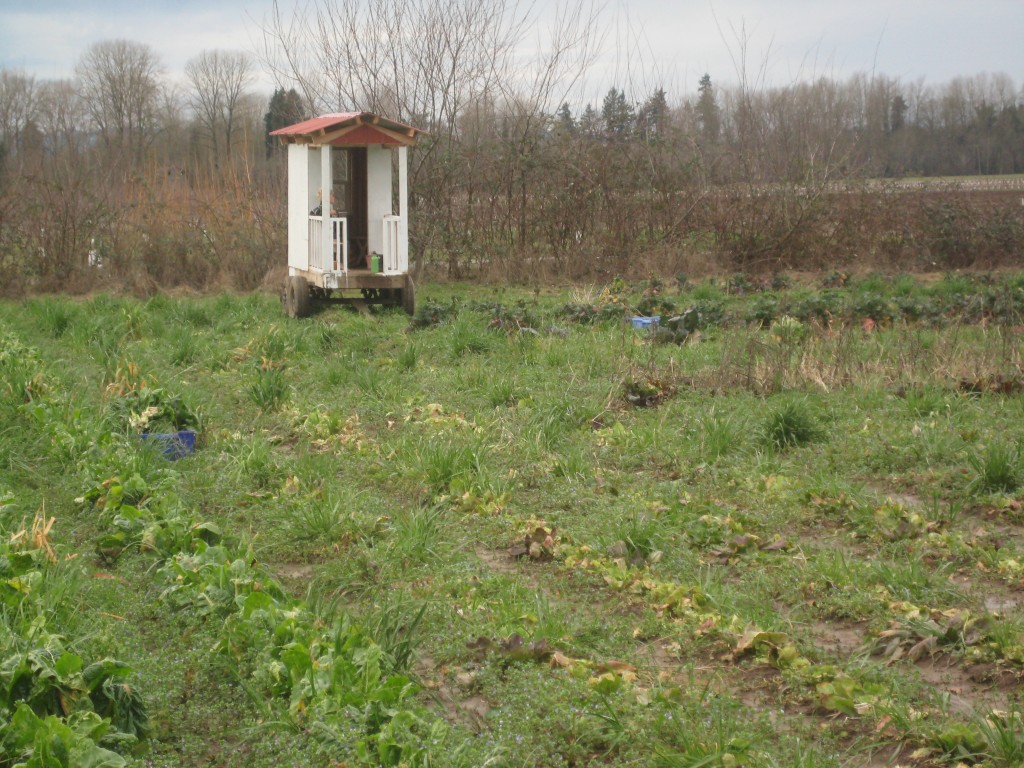
The play house’s temporary home amongst winter greens. On Monday, it was parked by the orchard while Casey pruned. Where will it go next?
Honestly, days like today are not when we need this little shelter, but there will be a day when Casey and I once again have to harvest for the CSA in the rain. And, then that hot summer sun will return too. It really will!
And, if you’re wondering about the details of our little farm life — the kids and I definitely don’t spend all day in the fields with Casey. This time of year, we have two afternoons per week that the kids regularly spend either working alongside us or just playing while we work (one of those days, I stay inside to do farm paperwork). In the summer, we’ll probably shift our time on the farm to the mornings, and perhaps add more more spontaneous other projects and work times. For a three and six year old, that feels like about the right amount of time to be outside with the option to participate in farm work (or to play about). Besides, we have other things to do too — our school work in the mornings, our homeschooling co-op on Tuesday afternoons, the CSA pick-up on Thursday afternoons … life is full!
But, as a family farm, having our kids truly on the farm is a priority to us. Already, we are amazed at what they know about this place and its work, just from growing up here. We consider immersion in our farm life to be a vital part of our homeschooling experience (along with more traditional looking book learning). Eventually, the kids will make their own choices, and if they choose a different path, we hope that these early experiences will instill in them (at the very least) a strong work ethic and a deep love of the natural world. A love that comes with understanding of the complexities of natural systems and how they affect everything else. From there, they can go almost anywhere in the world.
I’m not sure if we have any other big changes we want to make in our farm’s system of tools and infrastructure this year. The playhouse was a fun and spontaneous project that felt just right for completing at this time of the winter. But more and more our work will be occupied with the usual prepare-for-spring stuff — we’ve already sowed lots of flats of fava beans, peas, broccoli and more. Today after harvest, we weeded strawberry plants growing in one of our field houses. I’m also working on my winter work — taxes, paperwork, preparing for certification work, etc. We’re finding that we’re both getting lots done in dribs and drabs — a few bills paid here; a few flats sowed here; a few feet of weeding there. Those dribs and drabs can be effective!
We hope that you too are finding some fun spontaneous projects and/or getting much needed work done in your own life!
Enjoy this week’s vegetables!
Your farmers, Katie & Casey Kulla
~ ~ ~
Meet this week’s vegetables:
- Liberty apples
- Marina de Chioggia winter squash — In my routine of making Very Simple Soups with our chicken broth, today I made a quick squash soup with some Marina that had previously been cooked in the oven and was in our fridge. I removed all the cooked flesh from the seeds and the skin and added it to a saucepan with plenty of broth, some butter, some salt, chopped garlic, and a little turmeric and salt. I let it simmer on the back burner while I was cooking the rest of our meal and then pureed it with my hand blender just before serving. It was a delightful addition to our lunch!
- Butternut squash — You could also make a simple and quick butternut soup using chopped, peeled cubes of raw squash. If you put them in a pot at the beginning of cooking the rest of a meal, they would cook quickly.
- Brussels sprouts OR cabbage — Casey harvested the very last of this winter’s Brussels sprout harvest (he couldn’t even get to these at one point earlier this winter because they ended up on the other side of us across some flood waters) — what is left is a small amount and we will limit how much each household can have for this share (we only do this in rare instances). We look forward to a more abundant Brussels sprouts harvest this coming fall.
- Kale
- Chard
- Sweet potatoes — An important note about sweet potato storage — do not put them in your fridge! Instead, remove them from any kind of plastic bag and put them in a dry, warmish place until you are ready to cook them. Great sweet potato recipes abound, but as always our family favors the simplest preparation: I peel them and roast them at 425° in butter, stirring regularly so that all sides get coated in butter as they cook. I roast them until they are crispy outside and soft inside. Avoid overloading the pan, or they will steam rather than roast!!!!
- Sunchokes — These funny looking roots grow at the base of a surprising looking plant — a sunflower! Sunchokes are sometimes known as “Jerusalem Artichokes,” which is useful to know if you look up recipes, but they are neither artichokes nor from Jerusalem. They are native to North America, in fact. As a food, they have many interesting properties. They store well through the winter, and yet they are not starchy like a potato. Instead, their structure is crisper and contains a sugar that apparently doesn’t affect blood sugar levels as dramatically as other root vegetables do. Consequently, you can (and should!) eat these raw. Our favorite way to eat them is to clean them well (cutting the nobs apart and scrubbing can help with this process) and then shred or chop them fine and make a winter cole slaw type of salad. Adding cabbage or carrots can stretch it out and make the color and flavor more complex. Sometimes, if we want to turn our salad into a meal, we’ll also stir in canned tuna or cooked chicken meat. Sunchokes also roast up beautifully, and I love their slightly chewy and crispy flavor after roasting. Unfortunately, Casey and I both experience a slight tummy ache after eating cooked sunchokes, which is a somewhat common challenge for people (some lucky people don’t have that experience at all, however! If you are in that category, enjoy your roasted sunchokes in my stead! They are so good!).
- Rutabaga — Although it looks like a turnip in shape, rutabagas are actually more closely related to kale (whereas turnips are more closely related to mustard greens). The flavor reflects that lineage too — rutabaga flesh is super mild and suitable to lots of uses without affecting soups or stews with a strong flavor. I like to peel and chop rutabaga to add in place of (or in addition to) potatoes. I made a delicious simple creamy rutabaga soup last week using our chicken broth and a little salt. These are also good just eaten raw in “stick” form — perfect for putting on a raw veggie platter with carrots and dipping in hummus or your favorite dip!
- Turnips
- Carrots
- Potatoes
- Garlic
~ ~ ~
And this week’s extra goodies from the farm:
- Eggs! — The supply is still growing and so are the size of the eggs. But we do have little pullet eggs for sale in limited quantity. The price is $5/dozen while they are still small.
- Stewing hens — This may be our last week for this winter’s stewing hen supply. The price remains $3.50/lb.
- Pork — Roasts and ground pork are $8/lb; pork chops and hams are $12/lb. Casey has been making the kids a very simple “breakfast sausage” from our ground pork. He thaws a package in the fridge and then mixes it with some chopped sage, diced garlic, honey and salt. Little patties cook quickly for a tasty winter breakfast!
- Lamb — Roasts and ground lamb are $8/lb; chops are $12/lb.
Beef— We sent a steer to the butcher this week! More beef coming soon!

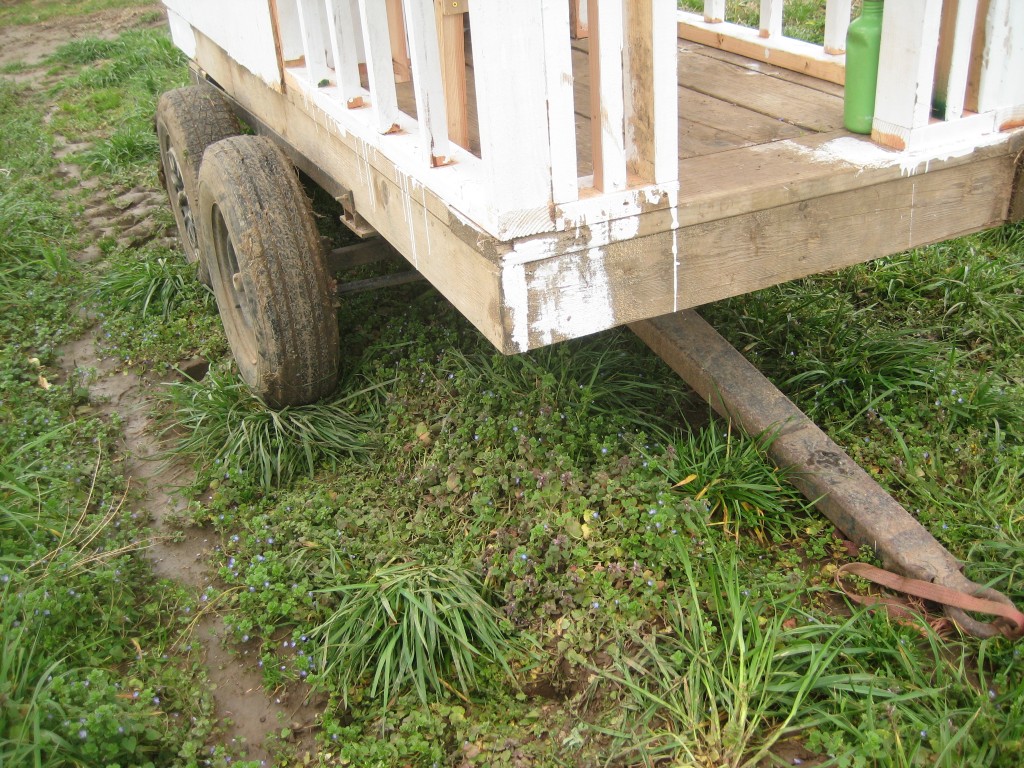
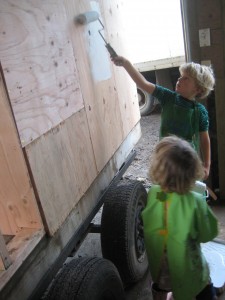
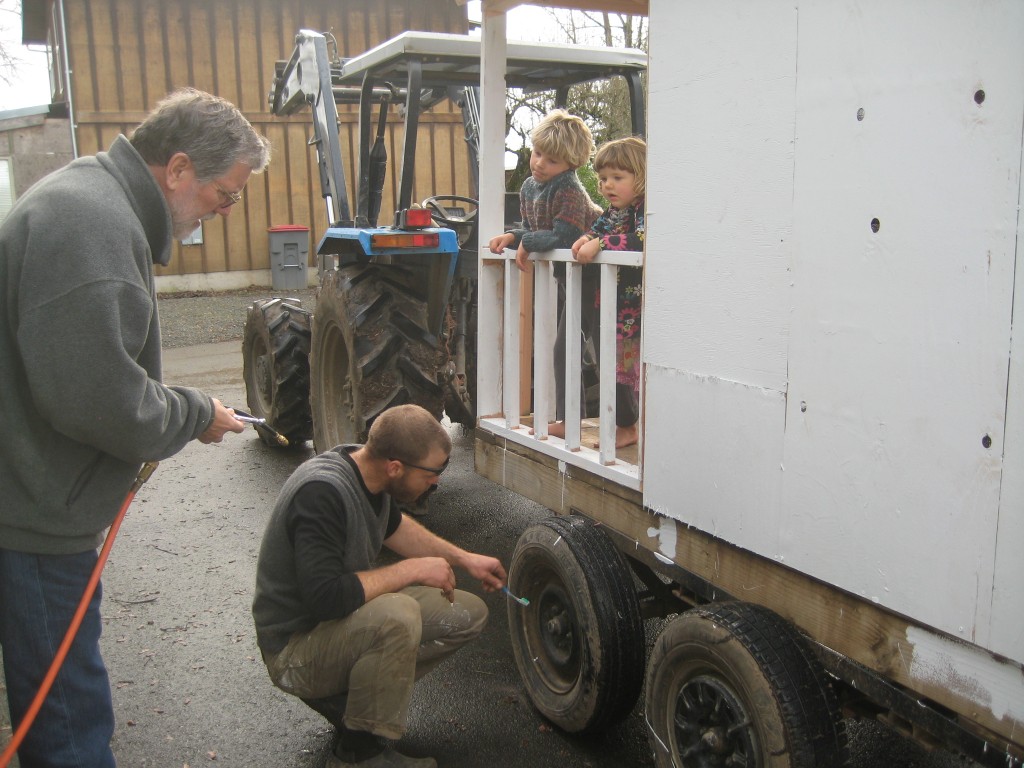
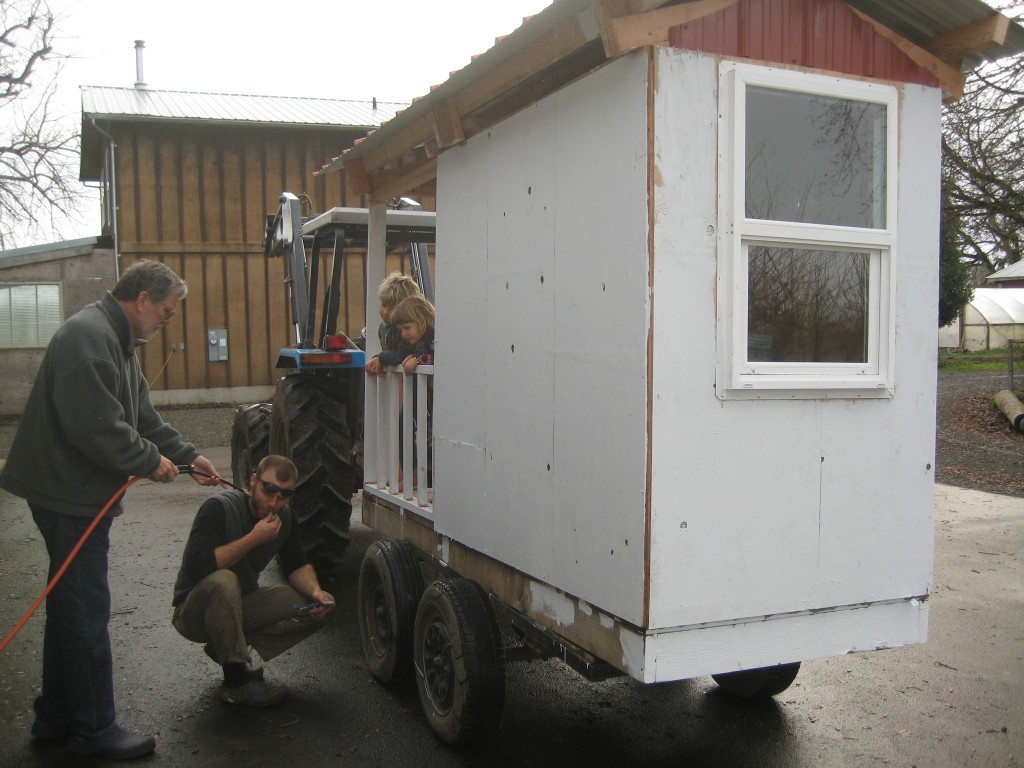
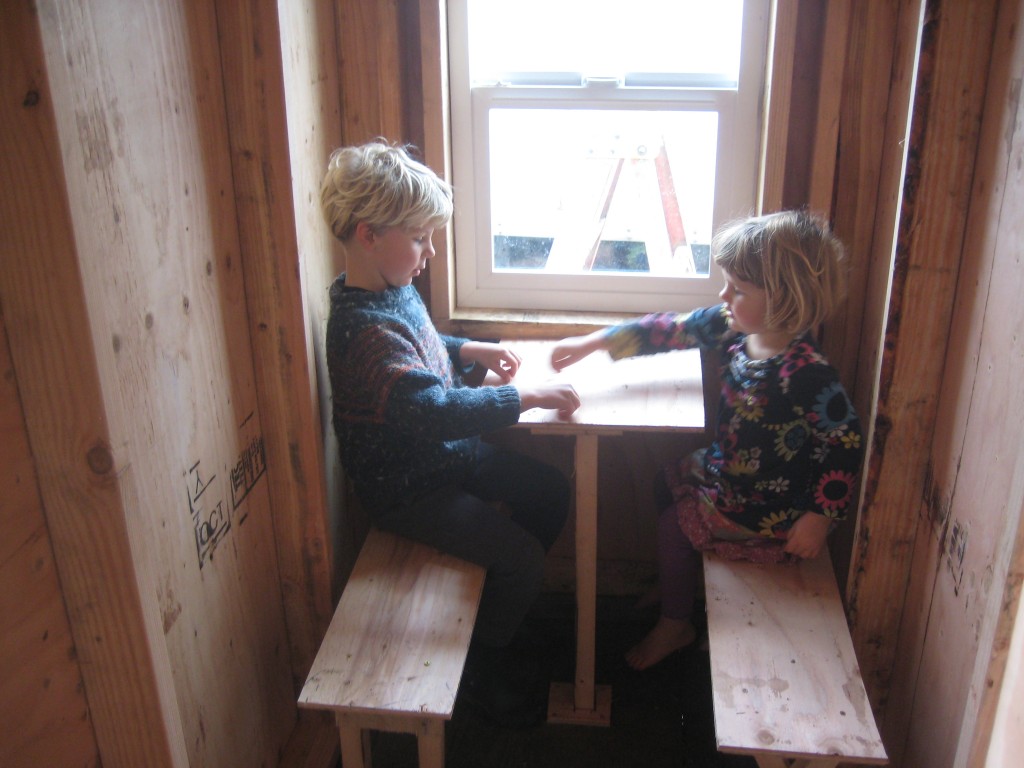
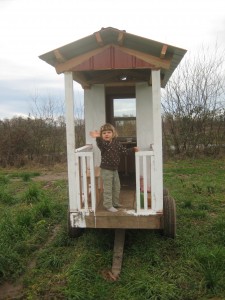


Wow, this is the coolest thing I have seen in a long time! Seriously impressed and sure it will bring lots of joy to all of you for years to come. Good Job!
Thanks Bryan! Now we have our own family-built tiny house!